 Swimming in symbolism, transgressive eroticism, and perplexing surrealistic assertions about its main protagonist, Joao Pedro Rodrigues' The Ornithologist is an artistic achievement that is bound to confound as many as it entrances, a film far more interested in crafting an irresistible allure of intrigue and mystery than providing its audience with any concrete take aways about what it is or what it isn't. An enigmatic descent into the personal and spiritual odyssey of Fernando, a solitary ornithologist, who finds himself lost in the wilderness, The Ornithologist takes on a homeric spiritual quest of enlightenment, one that finds Fernando faced to confront his inner self, as he ventures deeper and deeper into this mysterious setting. Radical in design yet alluring in its surrealistic execution, Joao Pedro Rodrigues' The Ornithologist is the type of film that is best observed with a cunning yet receptive eye, as the filmmaker has created an experience full of radical dramatic mutations, one thats unpredictable nature reinforces its opaque narrative centered around one man's spiritual and transformative journey in this surrealistic environment. Perhaps best described as a subversive take on the adventures of St. Anthony, The Ornithologist details a man who through this spiritual odyssey is driven to extreme, transformative actions, with the film feeling deeply personal and heavily rooted in allegorical devices centered around homosexual repression and our main character's struggle to reach a place of personal and spiritual comfort. While much of The Ornithologist is wholly up to the interpretation of its viewer, the film's most powerful assertion is related to the existential nature of main's incessant nature to attempt to define and understand the indecipherable nature of life itself, detailing how personal and spiritual enlightment itself often comes in ones ability to let go, and except that some things in life will never be as easily comprehending or explained as we as individuals wish it to be. Through our main protagoinst's mysterious and surrealistic journey he reaches enlightenment only when he begins to accept this ideal, letting go and reaching some semblance of solace, comfort, and acceptance when it comes to the unknown aspects of oneself and our existence, an arch which could certainly be interpreted as an allegorical device related to homosexual repression. Through the various characters he encounters, most notable the Chinese Christian woman, Fernando finds himself continuously confronted by Christian theology and its preconceived notions of morality and worth, confrontations that push this character towards internal tranformative moments, ones which eventually lead him towards a higher understanding of oneself. Rodrigues continuously juxtaposes christian theology with that of nature itself, showcasing how both forces in The Ornithologist come to symbolize things out of our control as human beings, with Fernando's odyssey towards personal enlightment being driven by his ability to listen to and accept guidance from things he can't simply comprehend or fully understand, a concept which the viewer themselves should keep in mind when attempting to comprehend this opaque and enigmatic piece of artistry. Radical in design and thematically challenging, Joao Pedro Rodrigues' The Ornithologist feels personal in its assertions about individualistic sexual repression while simultaneously grandiose in its attempt to deconstruct existentialism, being a film which attempts to find solace in the unexplainable nature of life itself. Full of alluring thematic ideals that are bound to stay with the viewer long after the credits roll, The Ornithologist is best viewed as a film in which one doesn't go in looking for concrete thematic assertions, accepting instead that much of this film, like life itself, is beautiful due its enigmatic, undefinable nature.
0 Comments
 Academic yet accessible, expansive yet intricate in approach, Bill Morrison's Dawson City: Frozen Time is a singular experience, a film which uses rare silent films, dated news reels, archival footage, interviews, and static historical photographs to detail the bizarre true story of a massive film restoration project, where some 500 long forgotten silent films dating from 1910-1920 were discovered buried in a sub-arctic swimming pool deep in the Yukon Territory, in Dawson City, located about 350 miles south of the Arctic Circle. Bill Morrison's documentary is an ode to the transitive properties of cinema, detailing its ability to document and preserve a certain timelessness, with Dawson City: Frozen Time detailing an intricate historical deconstruction of the small town of Dawson City, a beacon of the Yukon which boomed during the gold rush of the late 1890s, only to fall into obscurity when the gold had been excavated. Bill Morrison's film depicts the history of this gold rush town through the lens of this large film collection, a decision which manages to provide an intricate historical narrative while also delivering a stirring evocation on the timeless nature of cinema, detailing how film is intrinsically a part of the history itself. The Klondike Goldrush, which brought hundreds of thousands of prospectors to Dawson City, coincided with the rise of commercial cinema around the world and Dawson City: Frozen Time beautifully showcases the role which this small town played in creating the medium of cinema as we know it today, with names such as Sig Grauman and Alexander Pantages spending time there before making their way to Los Angeles, where they helped create the large-scale projector which could be showcased to the masses, known as movie theaters by everyone today. Dawson City: Frozen Time is a story of exile, birth, death, and ultimately resurrection, with the small town's rise and fall serving as the center piece, with the discovery of the 500 silent films underneath the permafrost of Dawson delivering a symbolic form of salvation to this town. Methodically detailed, Bill Morrison shows how the discovered films are a stunning archaeological find due to their ability to preserve history, with Dawson City: Frozen Time exhibiting the expansive nature of film and documentation and the profound effects and intrinsic relationship it has with history itself. Morrison's film mixes various forms of visual media together in concise and transfixing ways, but overall use of music takes the film to another level, becoming a meditative, tranquil experience as the viewer surveys the history of this small town through the lens of the birth of cinema. While some less adventurous viewers may find Dawson City: Frozen Time too academic for their liking, Bill Morrison's film maintains relatively accessible, with his passion for the history and transitive qualities of cinema shining through in every frame of this film. 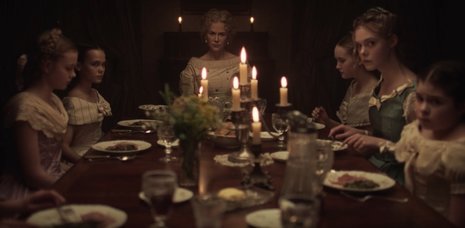 Set in Virginia during the height of the Civil War, Sofia Coppola's The Beguiled unfolds at a southern boarding school, where a group of young woman live a life which leaves them sheltered from the outside world. When a wounded Union soldier is taken into their home, he begins to slowly upset the fragile balance in the household, igniting sexual tension and causing rivalries among the various woman of the household, whose longstanding sexual repression begins to manifest itself in deceitful and potentially dangerous ways. Sofia Coppola's film is a story about the subversive effects of repression and the catalytic nature of desire, being a film that effectively builds a subversive atmosphere of intrigue and tension around this household, one which has come to see its power dynamics disrupted by the arrival of this Union soldier. Aesthetically, Sofia Coppola's The Beguiled is a beautifully looking film, relying heavily on natural lighting throughout its running time to create an authentic experience. The hot and humid Virginia setting evokes the brooding sexual tension between the film's characters, with Coppola routinely distorting the compositions and blurring the frame, an interesting choice which seems to be a visual tactic used to capture the uncertainty and curiosity of its characters, as many of these woman find themselves succumbing to their primal instincts early on, distorting their proper, societal-defined nature. Jealously and deceit slowly creeps into the household, dismantling the proper 'lady-like' existence of these characters, who slowly and increasingly succumb to their carnal desires. In an era where a woman's primary responsibility was to be a good wife and caregiver to her husband, Sofia Coppola's The Beguiled aims to deconstruct how these type of societal constructs and socially defined gender expectations only breed these toxic manifestations of competition and deceit in these woman, whose repression of their primal nature has left some of them emotionally and psychologically unbalanced. Attempting to appease this union soldier at every turn, the conflict between their expectations of servitude and their own sexual desires leads them to not fully recognize the possibly untrustworthy nature of this union soldier, a masculine presence intent on disrupting the feminine balance of the household. The Beguiled isn't so much about the conflict between masculinity and femininity characteristics as much as it is about incendiary nature of socially defined expectations, as much like the woman of the household, the union soldier himself sees his own undoing indirectly caused by societal expectations of what it's to be a man. When his leg is amputated, the union soldier becomes increasing erratic and hostile towards the woman of the household, a spiteful and violent character who feels that his masculinity has been taken from him. Unable to perform the functions of any well respected man in society, the soldier can no longer fulfill the social expectations of his gender, causing him to become a malevolent force in the household, one that becomes a serious threat to the woman due to his erratic, violent behavior. The finale of The Beguiled sees the woman of the household retake control of their environment through extreme measures, only capable of reestablishing control through the use of force, stifling the oppressive masculine presence through feminine means - serving up a wholesome, proper meal with a diabolical surprise. A film brooding with sexual tension, Sofia Coppola's The Beguiled exhibits the primal, sometimes destructive effects desire can have on the psyche, detailing how repression of intrinsic humanistic qualities of passion and sexual desire always almost always leads to malevolent ends. 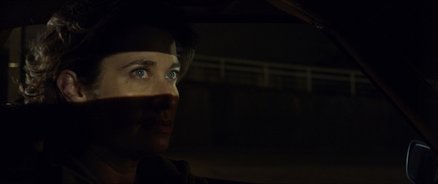 Anchored by an intoxicating central performance by Emmanuelle Devos, who manages to encapsulate a grieving mother whose fragility is only matched by her dangerous desire to pursue the couple she suspects is responsible for killing her son in a hit-and-run, Frédéric Mermoud's Moka is an evocation of the obsessive nature of grief, the toxic relationship it can share with vengeance, and the struggle to reach a place of acceptance in times of traumatic personal loss. A Chabrol-esque style thriller, Moka is a quiet thriller, finding its central protagonist, Diane Roy, befriend the individuals she believes were responsible for killing her son, entering into their lives in a way that makes her final intentions unclear at first, as the film is more than content early on to simply detail a protagonist who is simply searching for some semblance of truth when it comes to the tragedy that shattered her world. Mermoud's Moka relies heavily on Emmanuelle Devos as Diane Roy, with the film never really pushing the envelop that much from a direction standpoint, unable to build an atmosphere that matches the unpredictable nature of Devo's performance. Desperate at times for more atmosphere, Moka may have benefited from a more voyeuristic aesthetic early on, with compositions that evoke the underlying determination in this protagonist who stalks these individuals, watching their every move, with the film remaining unclear for quite awhile, what exactly the intentions of Diane Roy truly are. Mermoud does provide some strong moments throughout, evoking the psychological torment of Diane, exhibiting how she routinely imagines her son lurking in the shadows of this grief-stricken environment she inhabits. Moka's examination of trauma, grief, vengeance, and the eventual need for acceptance is compelling despite the film's stylistic short comings, with the film's final scene effectively capturing how the living's best defense against personal trauma via grief is the shared connection they have to each other, as Diane comes to recognize that remembering the beauty of her son's life is truly the only way to form some semblance of strength, something that can't simply be achieved through vengeance. In the end, Diane is a character who reaches a point of acceptance about her son's death, letting go of being psychologically shackled by something she has no control over. While Frédéric Mermoud's Moka could have certainly used a more atmospheric aesthetic and brooding direction, Emmanuelle Devo's startling performance covers a large amount of the slack, crafting a character through performance which is dangerous yet fragile, brimming with uncertainty and deep-seeded trauma. 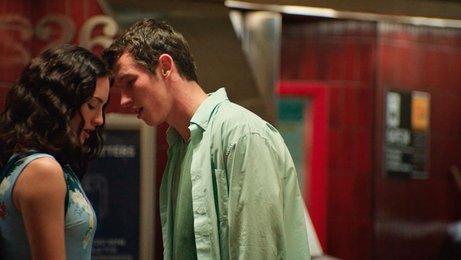 A story of hope, promise, and uncertainty, Adam Leon's Tramps is a fresh and humanistic story centered around two young outcasts in Danny and Ellie, who through a chance encounter, involving a mysterious briefcase, come to find a sense of solace in the budding connection which begins to evolve between them. Danny, a polish immigrant, is a hard, modest worker, yet he isn't satisfied in this environment, always at the whims of his delinquent brother, unable to break-free and find his own source of independence. Ellie's exact circumstances are a tad more mysterious, as the filmmakers wisely never feel the need to be didactic when explaining her source of trauma or lack of fulfillment, only subtly suggesting that she may be the victim of an abusive home relationship in Pittsburgh, with Ellie viewing this aforementioned mysterious briefcase as her way out of her current environment. The convergence of uncertainty and possibility is where Adam Leon's film strikes its most affectionate chord, detailing two characters in Danny and Ellie who seemingly haven't experienced much general kindness or joy in their respective lives, each forced to work together in an attempt to recover the briefcase for their mutual gain. Adam Leon's Tramps feels fresh and alive, with its characterizations, performances, and screenplay, never restricted by the tropes of the romance genre, delivering an exploratory character study that evokes a sense of hope and possibility through the evolution of these two character's relationship. Having a lived-in type of aesthetic, Adam Leon's film is voyeuristic in nature, with the lens often feeling like a cautious observer, remaining at a distance from these two character's whom are thrust into spending 24 hours together. The distance in which the camera observes provides a documentary-type aesthetic but it also is symbolic of these two characters, evoking their sense of uncertainty about one and other, their general timidness, and restraint, one that slowly dissipates over the course of the film as these character's begin to trust each other, with the composition becoming more intimate as a byproduct. A film completely void of forced sentimentality, Tramps reveals a slow transformation of these two souls throughout its narrative, revealing two individuals who slowly begin to shed their rugged exteriors, opening up to each other in ways that seemingly feel foreign to these characters, each of which has never fully been able to be themselves. Trust being paramount, and how this is achieved through a general sense of empathy and kindness is deconstructed through this fragile, evolving relationship at the heart of Adam Leon's Tramps, as both Ellie and Danny work through their own inner turmoil, each seemingly confronted with the possibility of something good happening to them, a foreign concept to those who have never experienced it. The last scene of the film, where these two characters struggle desperately to express their feelings towards one and other is generally one of the most affecting and heartwarming scenes I've seen in recent memory, with each character exposing themselves emotionally, exhibiting a trust and general hopefulness that had yet to be seen beforehand. Danny, a passive character, asserts himself, exposing himself to the possibility of rejection, while Ellie is generally left in a sense of shock, unable to even fathom how this young man could have such general empathy and compassion for her. These two character's struggle to express themselves to each other but their passion for one and other is clear and genuine, with Tramps exhibiting the intrinsic need for passion in order for their to be love. These two character's relationship isn't guaranteed to be a success, far from it, but in this moment they have each found a piece of solace in each other, with Adam Leon's Tramps delivering a hopeful and enchanting romance which is genuine, heartfelt, and deeply affecting.  Patty Jenkins' Wonder Woman is among the upper tier, when it comes to superhero origin stories, tapping into the fundamental nature of superhero mysticism, in presenting Wonder Woman as a character whose unwavering in her actions, a selfless, powerful character whose driven not by her own wants or desires but what she believes is the morally just thing to do. Patty Jenkin's film takes us back to the origins of this character, long before she was Wonder Woman, she was Diana, a princess of the Amazonians, whose desire to be a warrior and a fighter for her people was routinely suppressed by the wishes of her mother, the Queen, who only wished to protect her from harm. When a United States spy crashes on the shores of their sheltered paradise, Diana and her fellow amazonians learn of the massive war which rages in the outside world, World War I, yet Diana is forbidden to enter the conflict by her mother. Unwavering in her desire to stop the threat, and free mankind from the shackles of Aries-the god of war, whom she believes is responsible for the conflict, Diana rejects her mother's passive demeanor towards evil and conflict, setting out to fight alongside mankind in the hope of ending the war of all wars. Patty Jenkin's Wonder Woman is a surprisingly poignant tale of femininity, using the superhero archetypal story to deconstruct the restrictive definitions which society has placed on what femininity is and what it isn't, presenting in Wonder Woman a character who is strong, independent, and aggressive, when it comes to doing what she believes is right. Early on, Diana's maternal relationship with her mother is a simple yet effective parable for femininity, as her mother, the Queen, wishes to protect her, coital her from those outside who could harm her. While well intentioned, Diane's own mother doesn't recognized that true strength comes from independence, unwilling to recognize that Diana's best chance at protecting herself lies in self reliance. Societies' preconceived notions of what woman are and what women aren't is routinely touched on throughout Patty Jenkins film, doing so in smart and subtle ways, as the film effectively presents a lens to our perceptions of femininity as it relates to passive vs. aggressive forms of resolution. Diana's story is one of action and strength, with Jenkins film effectively shattering the notion that these are simply masculine traits, following Diana as she comes to learn and recognize her own true strength, discovering her full powers and true nature as a god by the end of the film. Her journey itself is not only about strength but also independence, with the narrative exhibiting moments throughout the film where Diana has to reject everything she is told by others and take action herself, with the most notable example of this being the front line sequence, which could be best described as the coming of age moment of the film where she becomes Wonder Woman. Like most films of this ilk, Wonder Woman still suffers from a screenplay that can be far too didactic at times when it comes to revealing plot points or character nuances, but the film's feminist assertions by and large feel surprisingly nuanced, which in turn makes them much more powerful, as Jenkins' doesn't show a need to pronounce them loudly but simply show them, with Gal Gardot's Wonder Woman routinely taking matters into her own hands, as a strong, independent force of justice. While the film does run a little long, with the third act in particularly really being the culprit of obstructing the overall brisk pacing, Wonder Woman also surprises when it comes to assertions on humankind, touching on the intrinsic relationship which exists between humanity and conflict, unabashedly acknowledging how both good and evil are often bedside companions in the hearts of humankind. I'd also be re missed if I didn't mention the action in Wonder Woman, with Patty Jenkin's doing an effective job at balancing the visceral nature of the action sequences with the need for coherent presentation, picking her moments when it comes to spectacle while keeping the film relatively grounded in its presentation of the action set pieces, something that has been very rare up to this point int he DC universe, post Nolan's Batman films. Surprisingly introspective not only about femininity but also human nature, Patty Jenkins' Wonder Woman transcends mere escapism at times throughout its story, offering up not only a crowd pleasing superhero film but also a story that is sure to inspire some on an emotional level that goes well beyond mere entertainment. 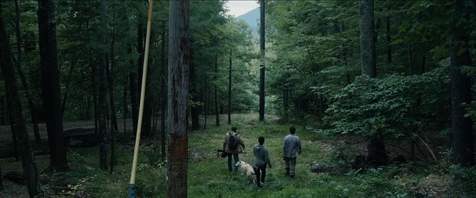 Trey Edward Shults' It Comes At Night is a horror film which attempts to exhibit the quintessence of its genre, personifying the intrinsic nature of horror through a relatively quiet, haunting human story of the primal, sometimes ruthless nature, of survival. It Comes At Night is a story of continuance, following Paul and his family, who have secured themselves in their home, deep in the forest, in an attempt to protect themselves from an unnatural threat that terrorizes the world. Along with his wife, Paul has established a set of rules for him and his family in order to survive, ones that are tested with the arrival of a desperate young family whom seeks refuge in their secure home. It Comes At Night is a film which is intent on remaining vague about the unnatural threat that terrorizes the world in what one comes to understand is some type of post-apocalyptic scenario, but the film never panders to the viewer when it comes to disclosing the details of this dire situation, letting narrative itself and the characterizations' slowly provide insight into the world. In a sense, while Trey Edward Shults' rejects any notion of didactic filmmaking, even when it comes to establishing the environment of its characters, effectively subverting the norms of the horror genre where world-building tends to be considered paramount. Attempting to deconstruct the inherent selfishness and violence of survival, It Comes At Night is a film that is a film which reveals how quickly empathy and humanism are eroded under the guise of existential threats, detailing how desperation and despair drive good natured individuals to do heinous things in order to survive. Trust is a fleeting concept in this environment, with the divulging relationship between the two families creating tension, deceit, and potentially conflict, with much of It Comes At Night being a brooding character study with a great sense of slow building escalation, as the power structures and rules of law established by Paul slowly become tested by this new family, whose demeanor and general outlook in this harsh environment to be more humanistic and empathetic, far less hardened by the grim outlook of the world they inhabit. It Comes at Night could be considered a plea for humanism and empathy even in the most dire of situations, with the film's finale divulging into an extremely dark and traumatic place, one which finds all the character deeply effected, whether it be mentally or physically, by their survival-based actions. It Comes At Night touches on lots of interesting dynamics and thematic ideas outside of this plea, such as the toxic effect of authority or humanities' intrinsic desire for control, but they simply aren't fully explored enough, with the filmmakers intent on delivering a startling manifestation of what true horror is - the erosion of morality and humanism in the face of existential threat. Much of this film works thanks to strong performances and Trey Edward Shults' direction, with the filmmaker's use of sound and image effectively creating an atmosphere of mystery, intrigue, and tension, one that relies heavily on darkness to tell its story of the impending doom and existential threat that is never truly identified by the filmmakers. A dire affair that relies very little on action or gore to create its chilling story, It Comes At Night is a film which attempts to tap into the cold, primal nature of horror, one which finds its characters slowly lose their humanity and sense of morality when their lives are threatened. 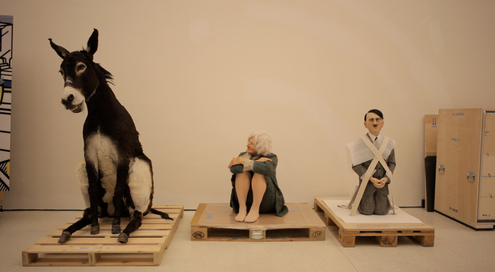 Maura Axelrod's Maurizio Cattelan: Be Right Back is a documentary profiling an art world upstart in Maurizio Cattelan, whose provocative style led him to acclaim and eventually status in the artistic establishment. Playful in execution, much like the disruptive, subversive style of the artist it profiles, Be Right Back is a film that is first and foremost a portrait, detailing Cattelan's early life and the unique progression of his career, one that found him go from renegade prankster to an institution himself in the contemporary art world, with the Guggenheim doing a retrospective of his work in 2011. Having known very little about Maurizio Cattelan, I found this documentary informative and full of interesting ideas about the elusive nature of art itself, one where subjectivity dispels any finite definition for what is art, with what it means being far more ambiguous than the art establishment tends to let on. Maura Axelrod's Maurizio Cattelan: Be Right Back's desire to profile this disruptive, controversial artist does, at times, come into conflict with its thematic pronouncements about art, with the film's assertions into subjectivity vs. objectivity, art's relationship with commerce, and the general reflexive nature of defining art itself, not as fully explored throughout its narrative as I would have hoped. Maurizio Cattelan being a disruptor who was written off as a prankster by some of the art establishment, Be Right Back explores the confrontational nature which art can take, challenging perspectives and expectations of what is allowed or what is not in the art world by those who experience it. Through this profile of Cattelan's disruptive style, Maura Axelrod's film touches on how coercive the relationship can be between the art institutions and power structures in the community and the artist themselves, much of this conflict being related to the desire by these structures to classify and grade something in art that is intrinsically up to the subjective reality of each individual who experiences it, not some collective. Be Right Back exhibits how the fundamental nature of contemporary art is rooted in belief, with Cattelan's rise to notoriety being driven by those who began to believe that his work was something to be admired, collectors or buyers who admired his provocative, singular style. Looking at the relationship between art and commerce, Be Right Back profiles how art itself is a commodity that is driven by the subjective emotional value to those who admire it, but more so financially by relevance defined by the art institutions and power structures, detailing how much mass perception hugely drives the price and therefore the success of the artist. An elusive artist who very much wishes to remain out of the spotlight, Be Right Back raises intriguing assertions about Maurizio Cattelan and the mindset of any devout artist, detailing how artistic drive and devotion to personal expression is often at conflict with socialization and even companionship, showing the toll this man's passions have had on those who care for him, with his drive not allowing him to give the same amount of love in return. Intimate yet expansive in its assertions about art and the artist which it profiles, Maura Axelrod's Maurizio Cattelan: Be Right Back is a fascinating art documentary which raises lots of alluring questions about the nature of art itself. 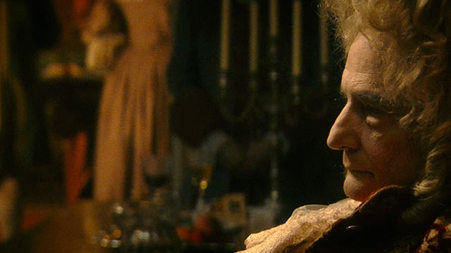 Far from an accessible experience, even for the relatively ardent cinema-goer, Albert Serra's The Death of Louis XIV is a slow-paced, piercing evocation on life and death, scoping its thematic assertions around Louis XIV, who died of gangrene, largely due to the inability of 18th-century medicine and its administrators. The Death of Louis XIV details the slow and steady deterioration of Louis XIV, using its tepid pacing in an aggressive way, forcing the viewer to stare into the abyss with this powerful man, and his army of doctors and counselors who can do nothing to save him, with Serra delivering a piercing document on the true weight of death, and the significance and gift that is life. Serra masterfully juxtaposes the importance of King Louis in this society, one where he is in absolute power, with the uninterested, slow, yet methodical nature of death, exhibiting how humanities' perceived power structures or societal classes, make no difference when the darkness comes for them. The overbearing decadence offers little reprieve, with the most powerful man in the country being slowly taken away. Louis XIV's deterioration and the threat that presents to his general counsel and the monarchy of France is methodically presented by Albert Serra's singular eye, revealing the backroom conversations by doctors, counselors, and men of religion, all of which have no solutions to the existential threat which defines humanity. Scientism and Religion are both man-crafted constructs which attempt to either define or explain our existence, yet Serra traverses man's various attempts at defining life itself with The Death of Louis XIV, exhibiting how they are merely one-in-same when it comes to humanity's attempts to grapple with existential meaning. Wry, yet darkly witty in tone, The Death of Louis XIV deals with some weighty and beguiling themes, one that pokes fun at the neoclassical period while simultaneously tapping into existential assertions. Albert Serra's aesthetic for The Death of Louis XIV is ravishing, using what appears to be almost exclusively natural lighting, a film which perfectly encapsulates its era, with all the lavish decadence offering little reprieve for King Louis as death approaches his door. Centered with a creative and entrancing performance by Jean-Pierre Léaud, Albert Serra's The Death of Louis XIV is a challenging film for one's attention span, yet its grandiose assertions about life and humanity, its striking aesthetic, and skilled direction, make it a memorable and entrancing experience to behold. |
AuthorLove of all things cinema brought me here. Archives
June 2023
|
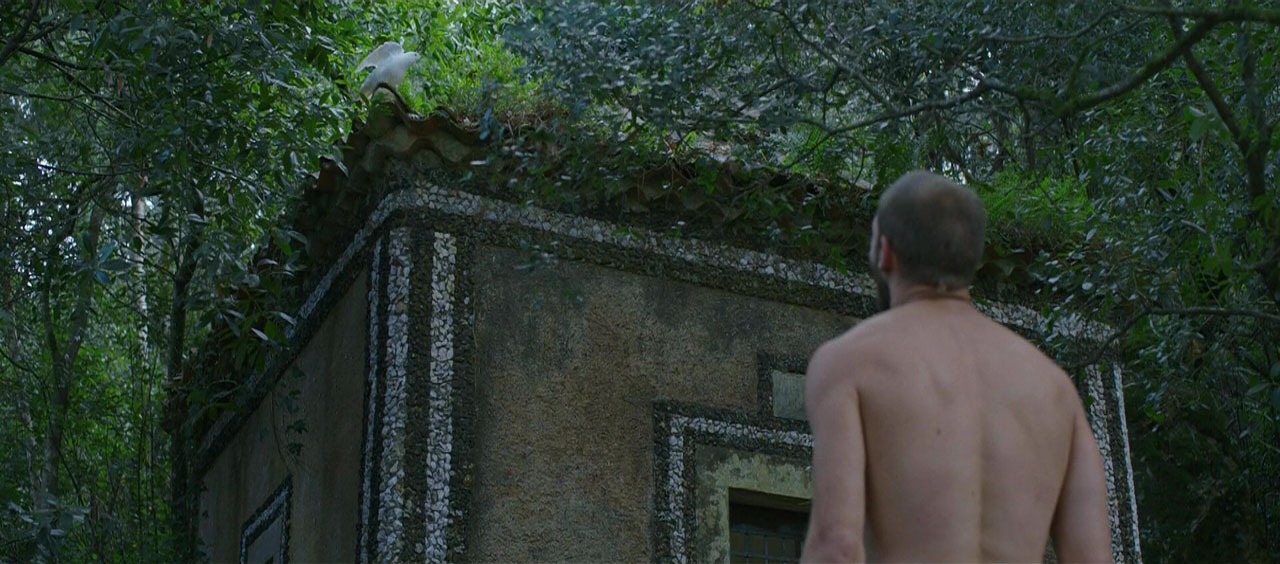
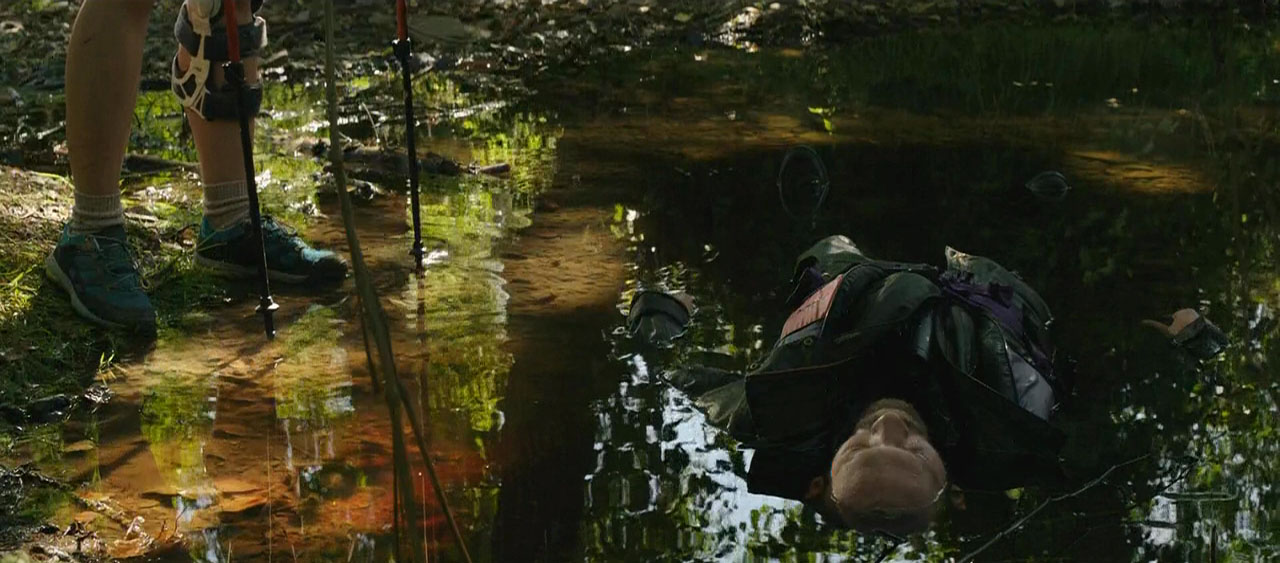

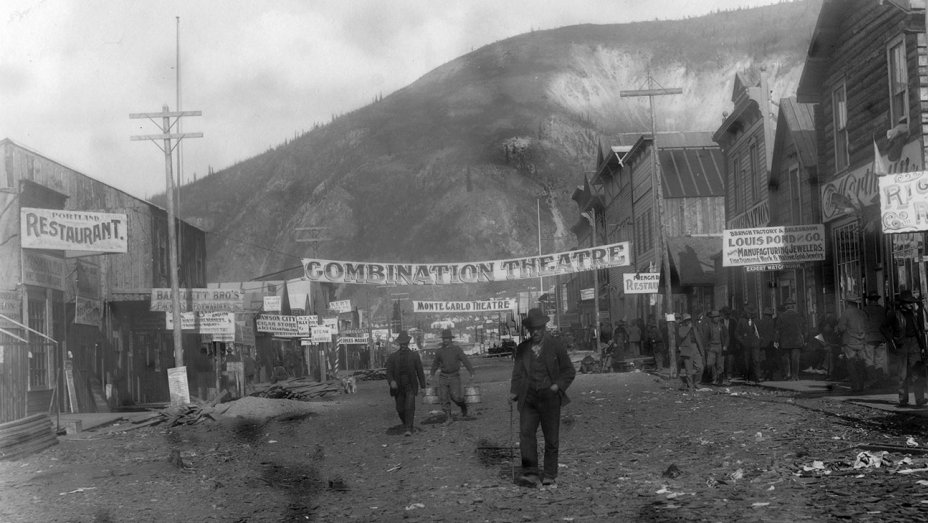
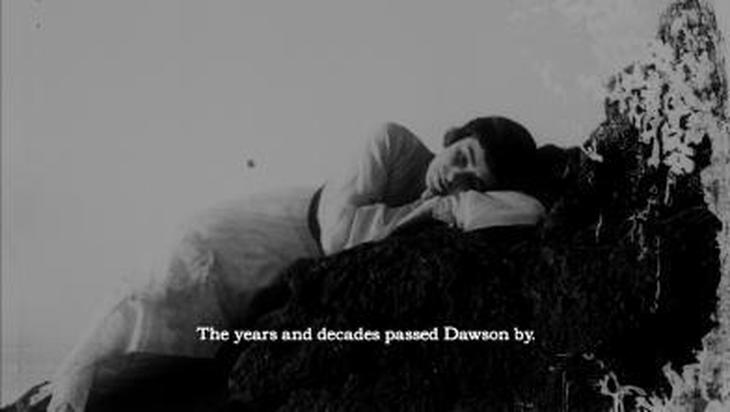
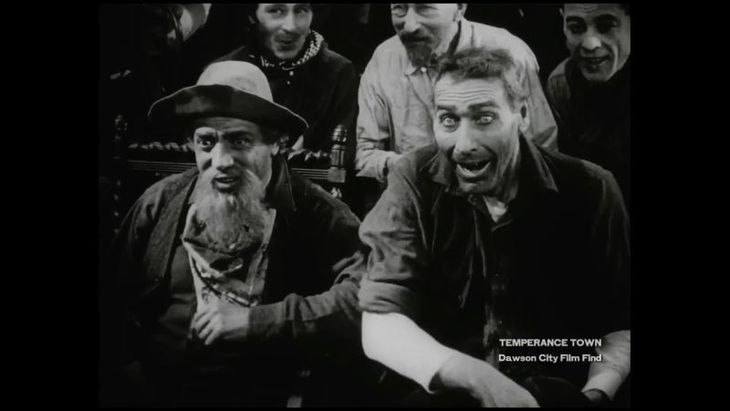
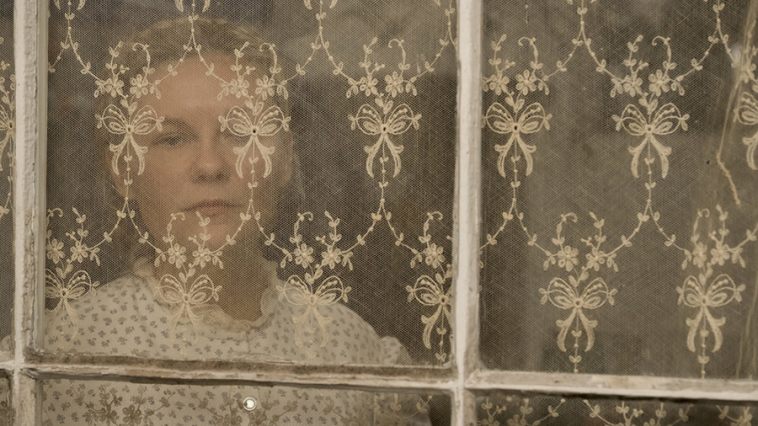
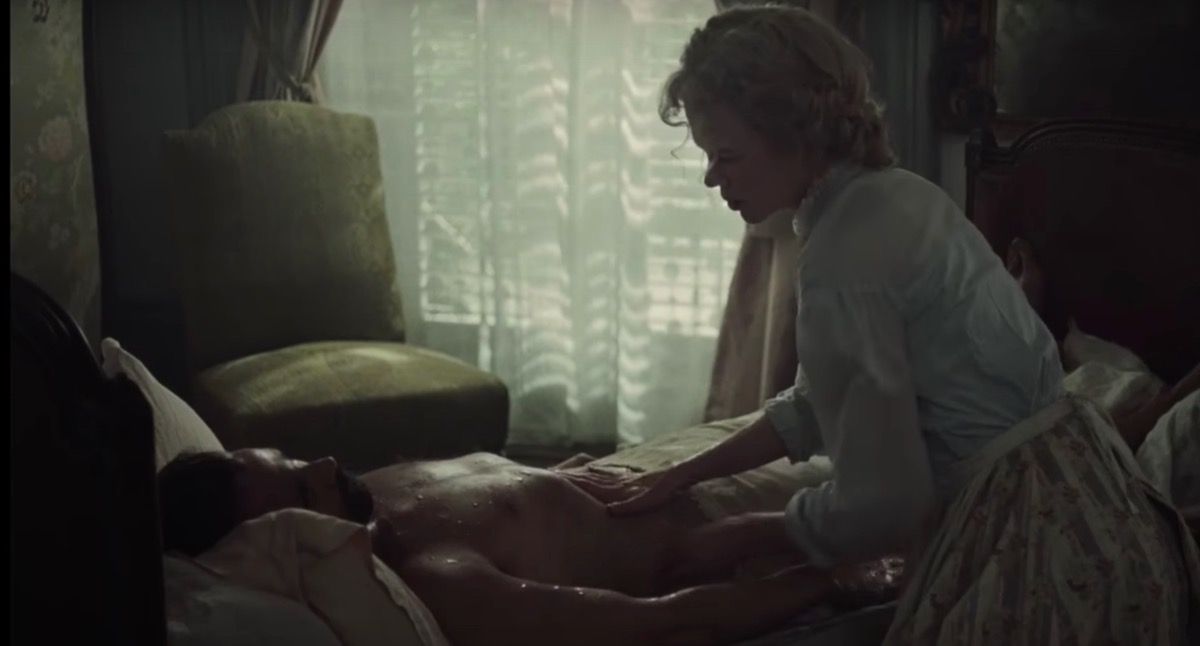
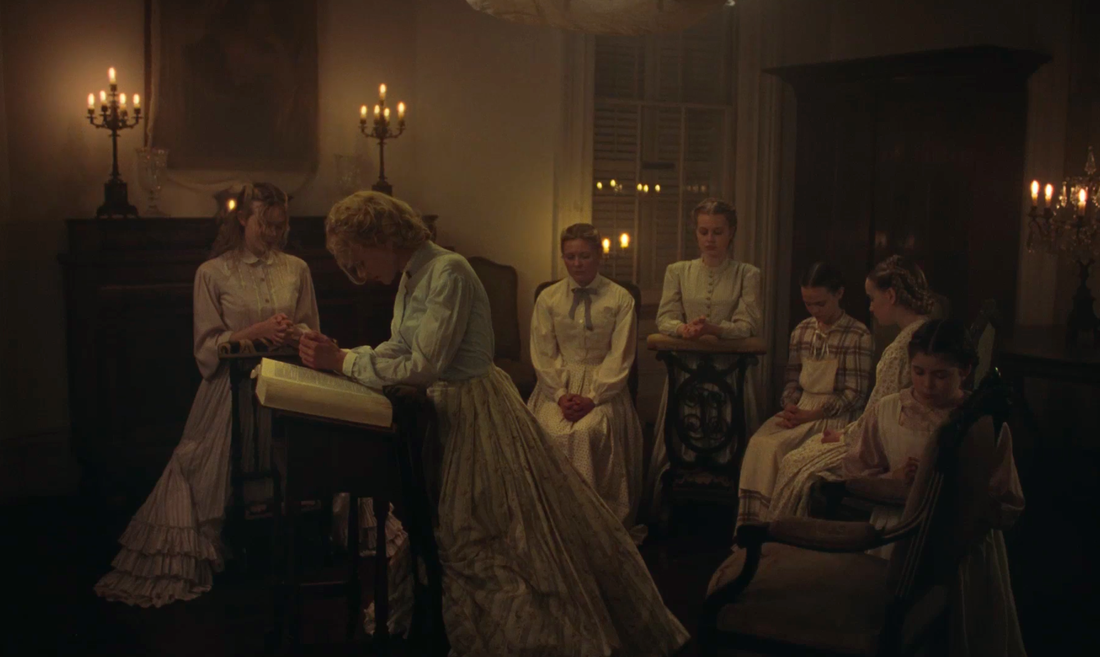
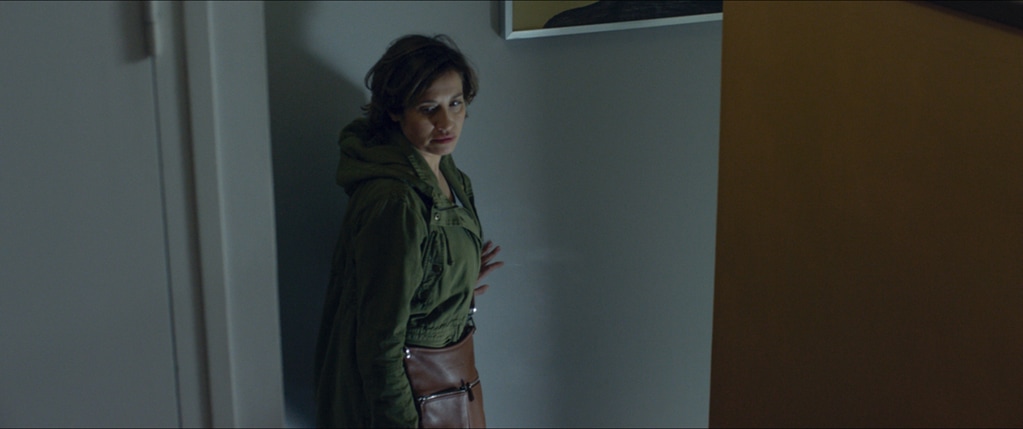

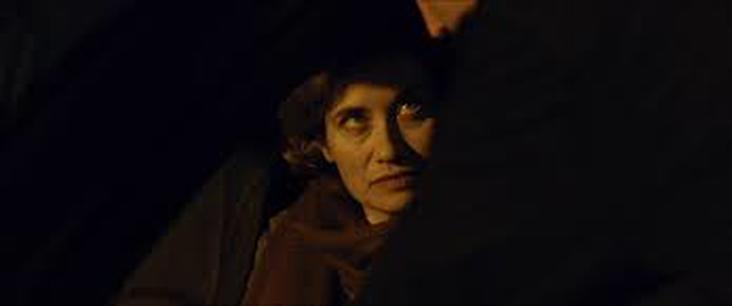

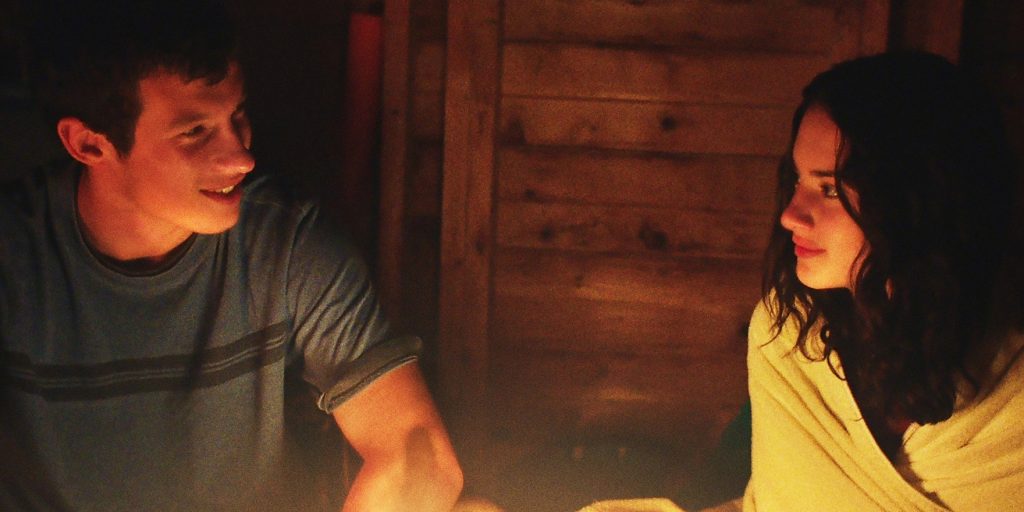
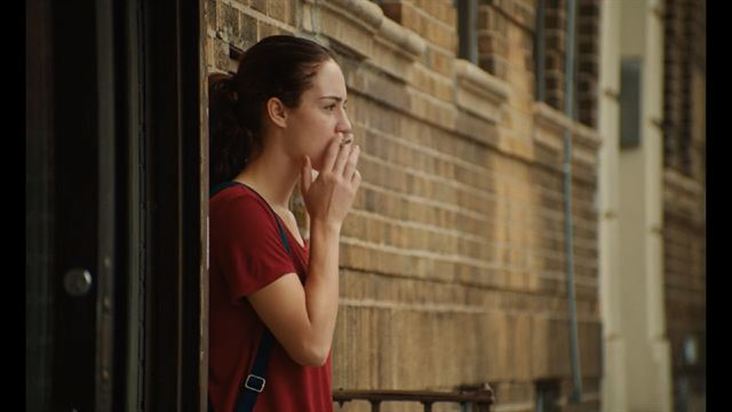


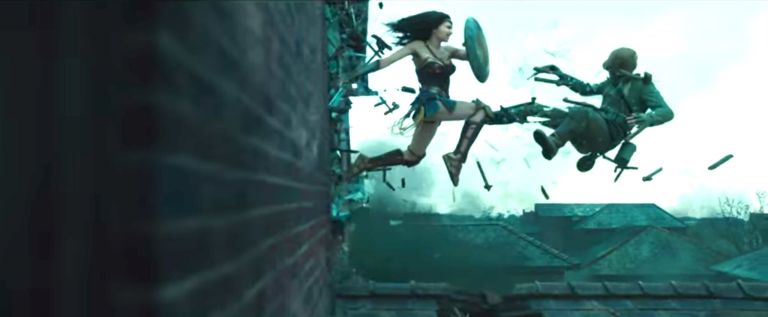
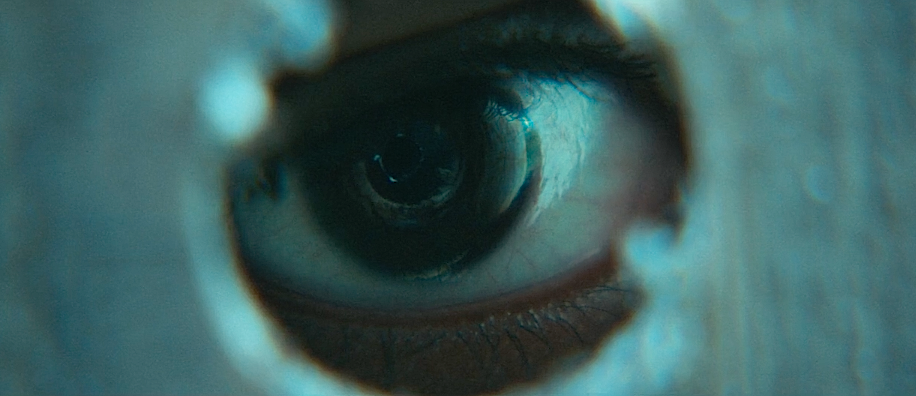
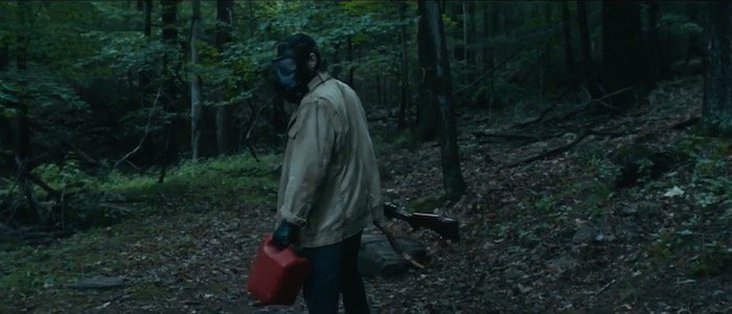
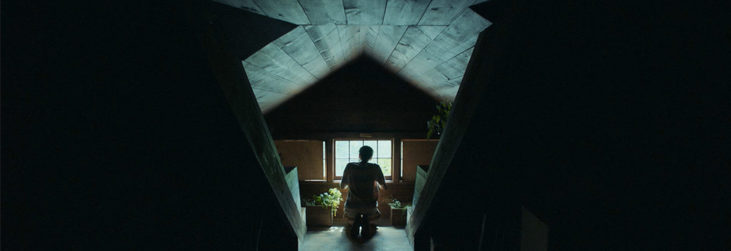
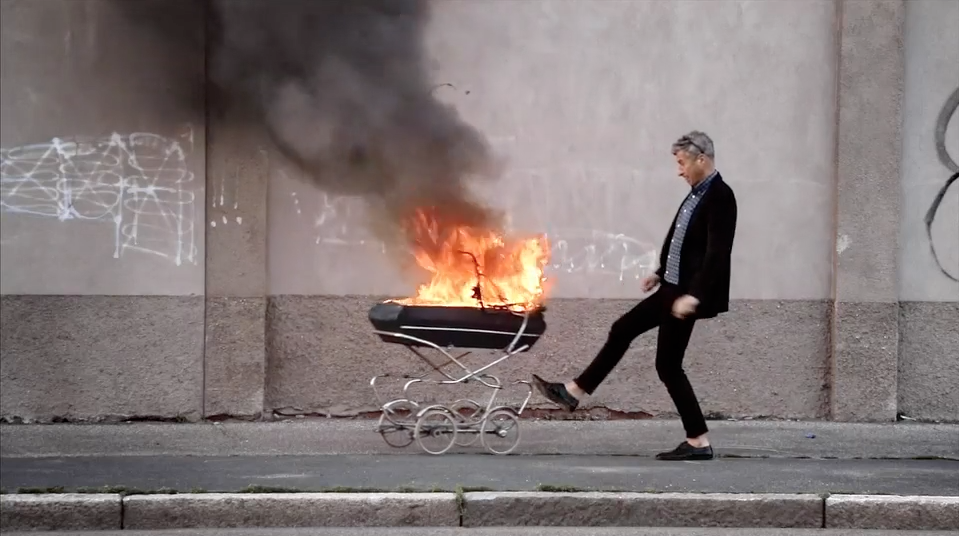

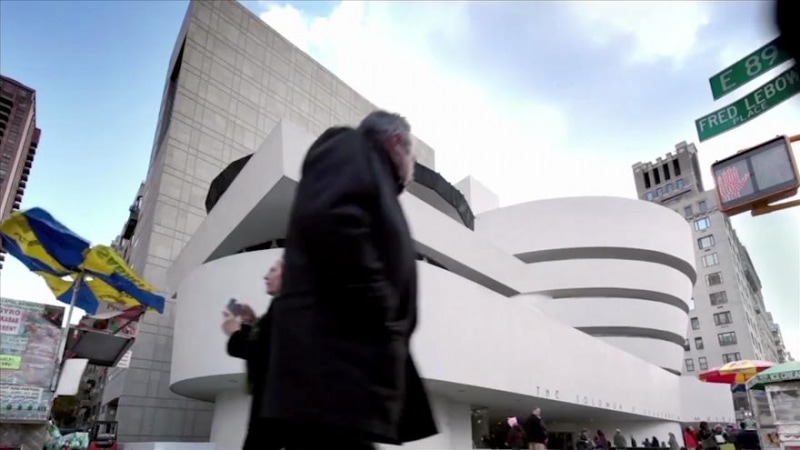
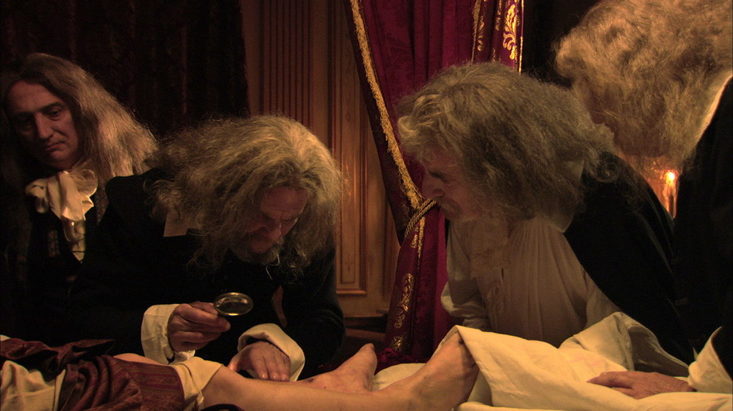
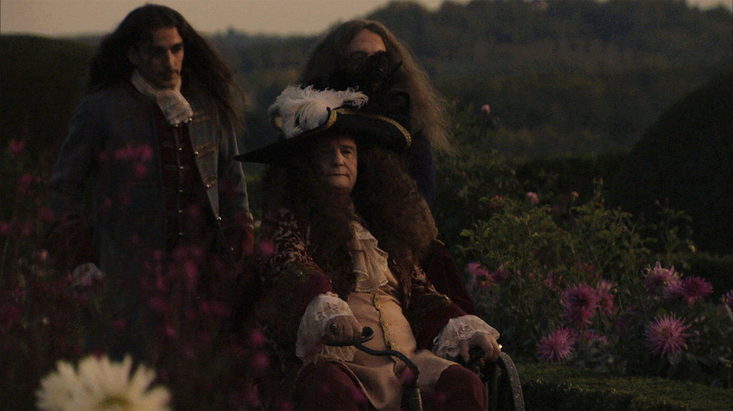
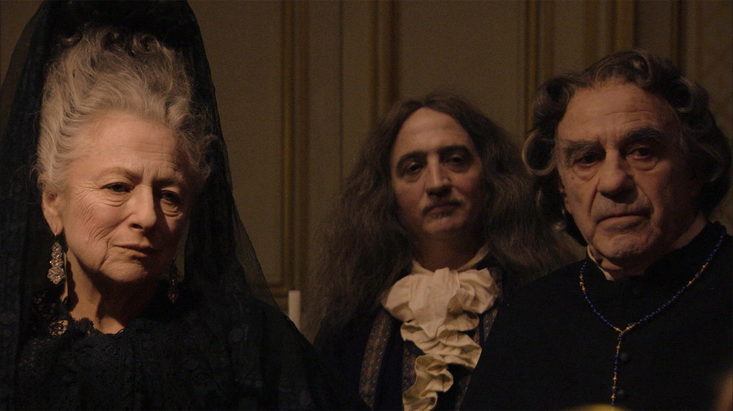
 RSS Feed
RSS Feed
